
WELCOME TO THE BRAINTREE AND DISTRICT AMATEUR RADIO SOCIETY
The club is grateful for the support it has received from Martin Lynch & Sons whose website is www.HamRadio.co.uk
The following are some headlines that highlight some of the activity that has been going on in the club. The date is that of the post, not necessarily the activity, which is typically the previous month! Our monthly club members magazine, BARSCOM, contains more reports and articles.
August 2025
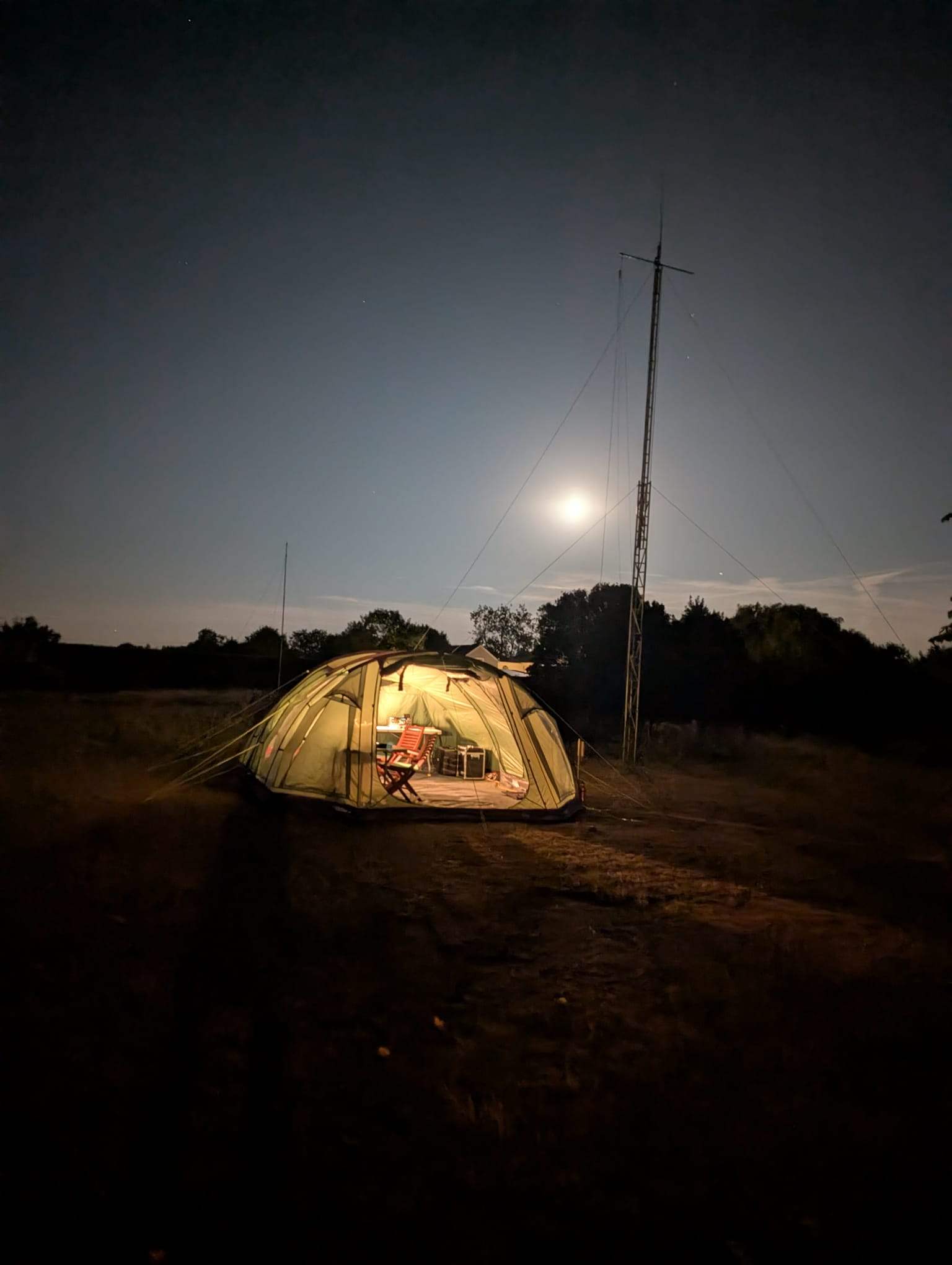
We held our annual summer camp at the QTH of Geoff, G1GNQ this year and there was ample space for members to experiment with their portable gear and thankfully, the usual sunny, dry and warm weather. Other changes this year included a curry take out on Friday evening to start the weekend off and a club barbecue on the Saturday evening. Both were very popular additions and there were also two firsts for radio configurations: Stephen, G8YVR set up his portable 23cm transceiver plus Yagi; and Dave, G0DEC set up a 2m/70cm satellite station. Dave did not have automatic CAT control of the rig or azimuth and elevation rotator and watching him having QSO’s through various satellites, manually controlling the rotator and correcting for doppler was a sight to behold! It was pleasing to see many new faces joining us, especially for the barbecue. The club tent was set up with with our club HF rig and looked very inviting under the clear skies and evening twilight next to its tower supporting the aerials.
July 2025
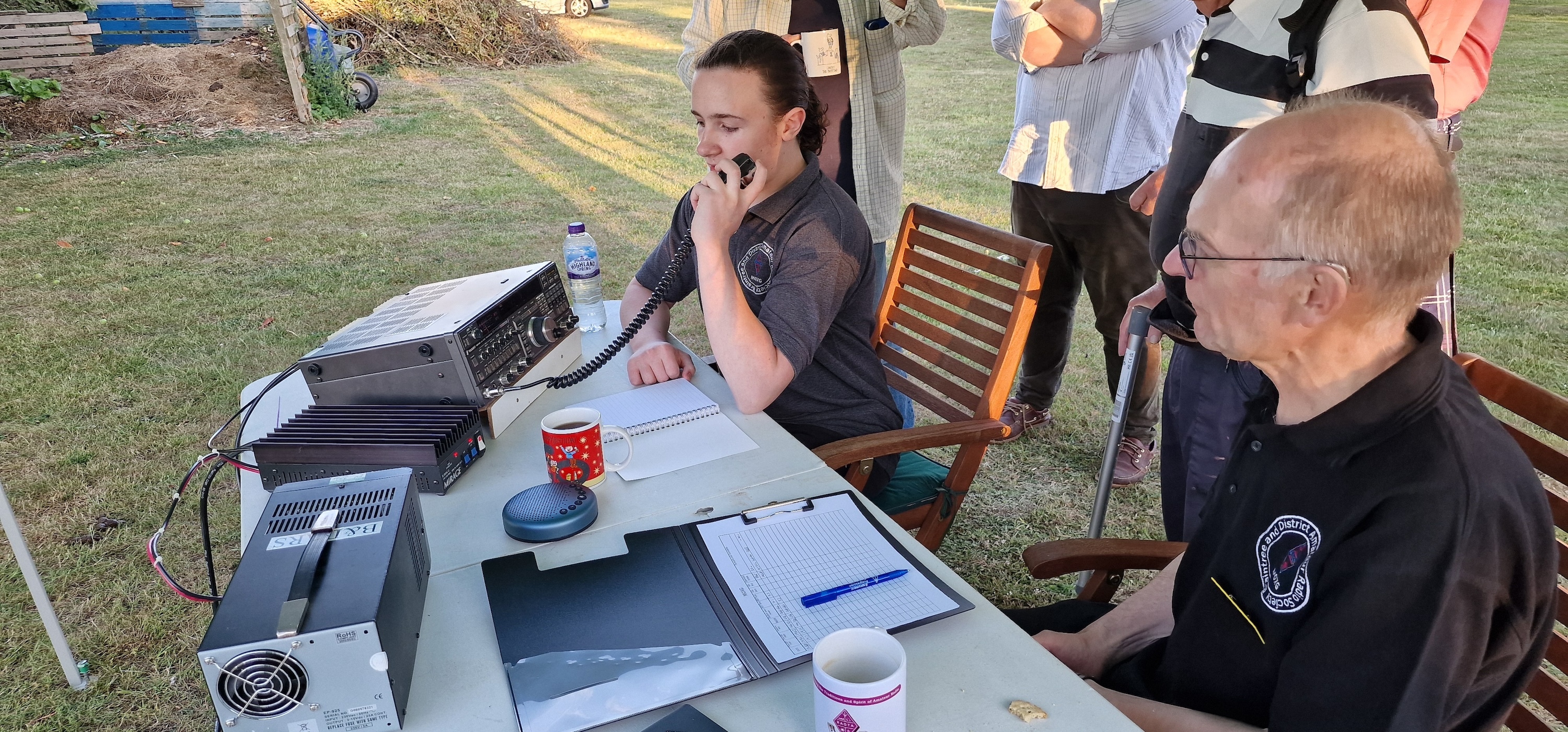
We held an operating evening at the QTH of Geoff, G1GNQ. HF and VHF/UHF stations were available for members to have a go, along with a satellite setup on which Dave, G0DEC was hoping to be able to demonstrate some satellite QSO’s but unfortunately couldn’t find one he could work through. Conditions were reasonably good and it wasn’t long before Tony, G0IAG called on 2m SSB from Peterborough, over 50 miles away. Although there were initial difficulties, some quick research revealed the beam to be on the wrong bearing! Once this was corrected we had a reliable path both ways. This enabled Logan, M7SVL to make his first 2m SSB rag-chew QSO, with experienced members on hand to encourage and advise. Meanwhile on the HF station David, G8LHD, Richard, G4FJC and Mike, G8DJO were able to encourage each other in their quest to become more proficient CW operators and the club’s classic Kent brass straight key was put to use for a couple of QSO’s. There were plenty of opportunities for a natter and refreshments. The usual club raffle was also available. Another great Badars evening.
May 2025
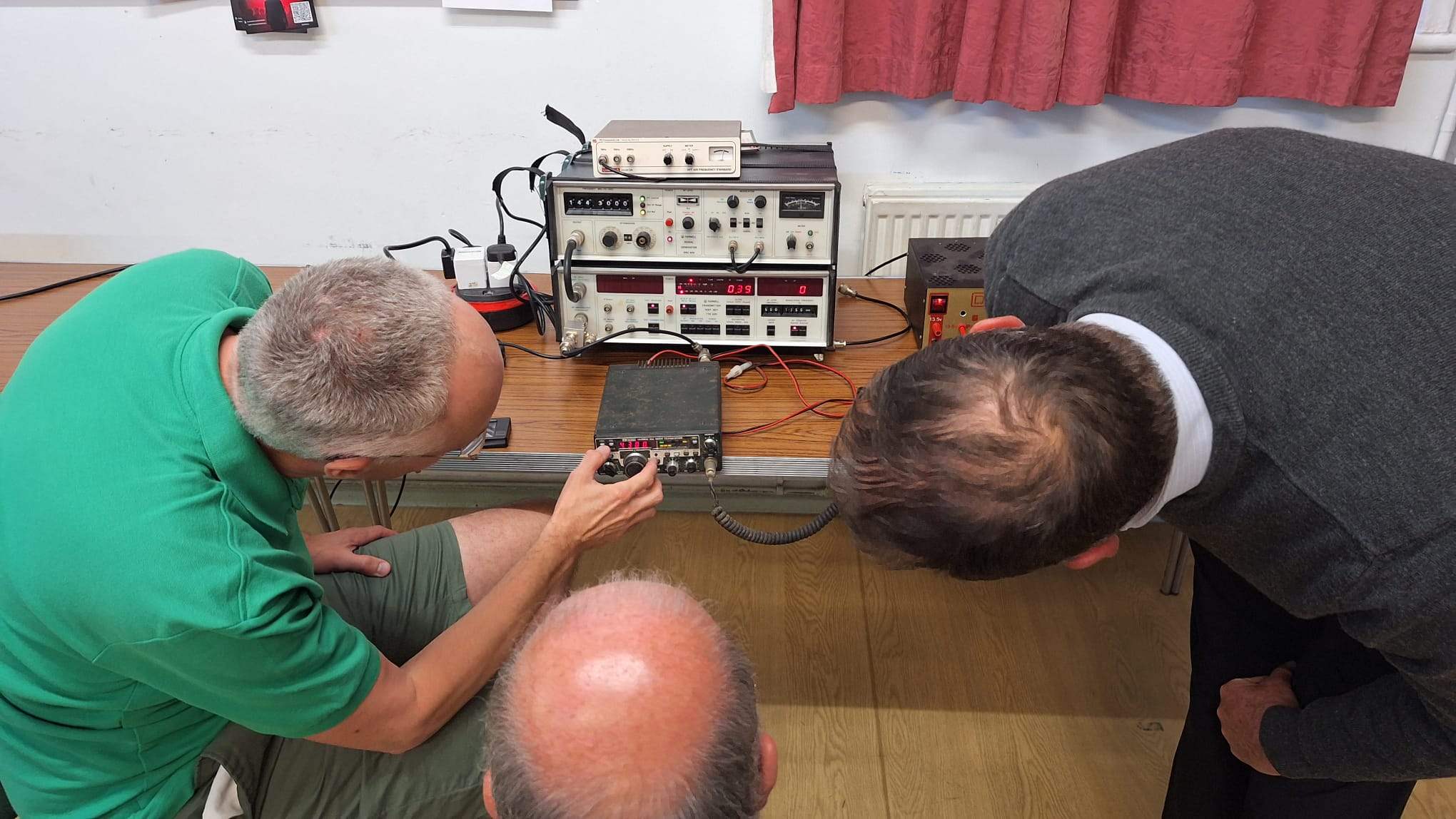
We held our annual ‘Rig Clinic’ and Dave, G0DEC and Howard, G6LXK raided their workshops to bring along their professional standard test equipment. There were plenty of people watching proceedings and offering help, including members that were joining in via Zoom! One of the rigs being tested was an Icom IC-290 all band VHF mobile transceiver, which had been rediscovered among some packing cases following a house move. The owner, Stephen, G8YVR had not seen this rig for over 20 years and wondered if it still worked. Amazingly, the original owner that Stephen had bought the rig from (Keith, G4MIU) just happened to be at the meeting and it was a grand reunion. Howard had the honour of checking out the rig and apart from an open circuit in the loudspeaker moving coil, it was perfectly OK! The photo shows Howard, Keith and Stephen marvelling at this 40 year old radio, bringing back many happy memories.
April 2025
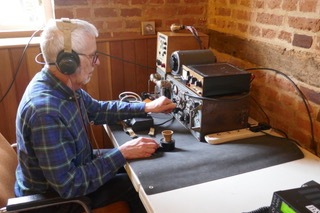
The club was invited by Markshall Estate to join them in commemorating the 80th anniversary of WW2 Operation Varsity, the largest airborne assault in history, that was coordinated from a mansion house on the estate. Howard, G6LXK, Geoff, G1GNQ and Tony, G0IAG provided an impressive line up of wartime receivers that were set up on a large conference table, with one of them, an AR88, connected to a wire aerial for visitors to tune around the bands on. Also in the room was a fully working WS 19 transceiver provided by Mike, G8DJO (pictured operating) and several members tried their hand at having a QSO on AM and CW, despite the only band open being 40m, which required precision tuning and highly selective hearing, as the WS 19 has neither of these! Fortunately, the club TS590S for HF and FT736 for VHF was also available. Using the call GB8OVY, 57 contacts were made over the three days of the event, many of which took place using CW with Dean, G4WQI on the key. The highlight for Gary, G5TCP was an SSB contact with VP8LP, Bob in the Falklands.
In addition to the main station located in the Markshall Estate conference room, we also had a Morse Code demonstration and "Have a go" set up in a gazebo by the main entrance and visitor centre. In addition to the Morse Code demo manned by David, G8LHD, there was a 1938 Hallicrafters receiver playing wartime music and short pieces from various speeches. The signals for this station were quite weak but reception was very good - thanks to an inductively coupled signal generator modulated by an MP3 player, curtesy of Dave, G0DEC!
The commemorative service itself took place on the last day of the event, Monday 24 March, with many invited guests from the armed services and other organisations in attendance. There were many visitors to the station and displays with much interest in the wartime equipment.
March 2025
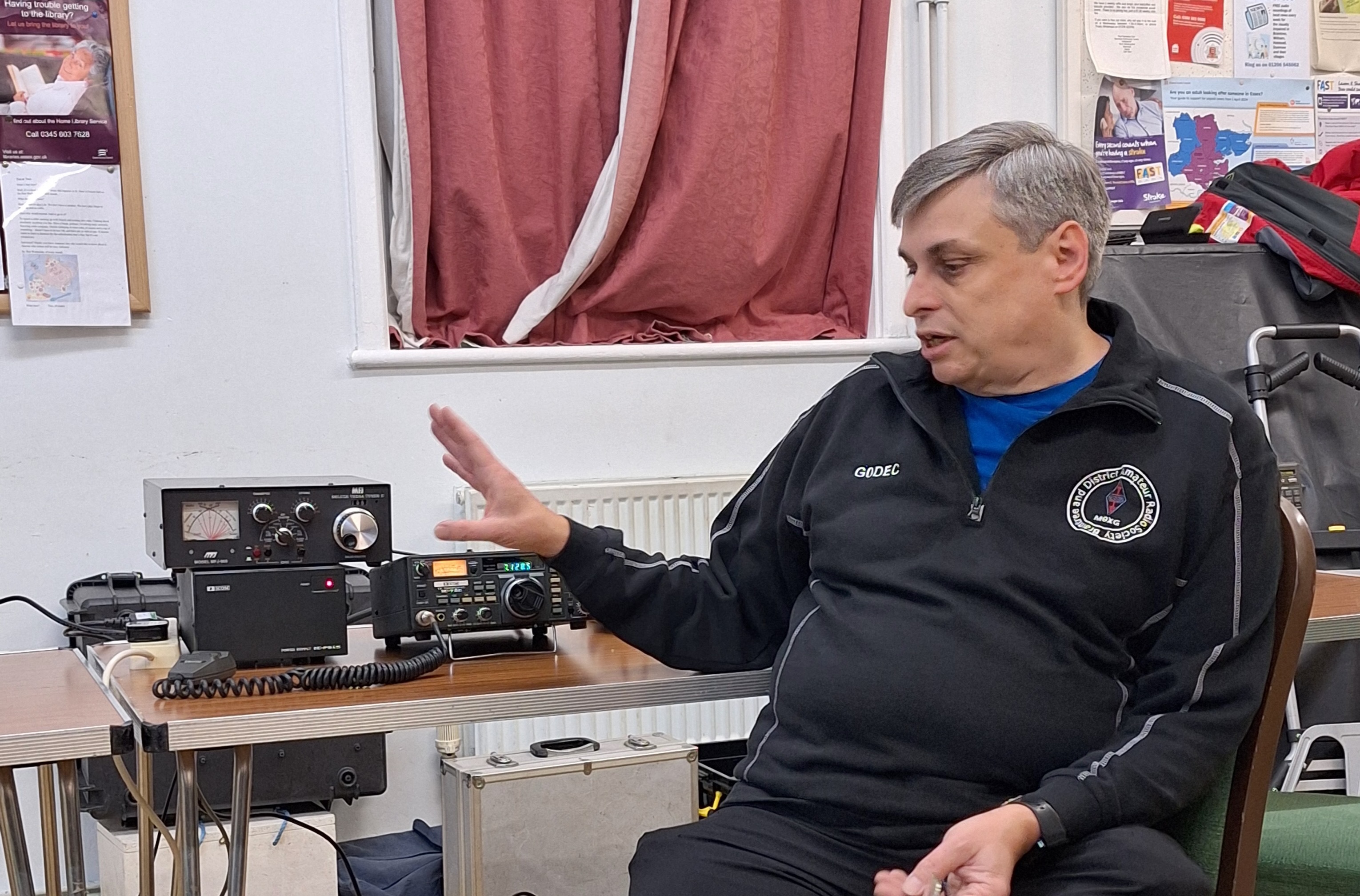
We have recently welcomed several new members with a wide range of backgrounds and experience. This has prompted us to devote a number of our regular meetings to going through the fundamentals of setting up and operating modern transceivers. Aimed principally at newly qualified members but equally a handy bit of revision for some of us older hands, Dave, G0DEC, ran through the set up of a basic station. He explained the purpose of the main controls on a simple transceiver and external antenna matching unit. He gave lots of on air examples of how each control might be used to get the most out of your station and ensure that it is operated safely and in conformity with amateur radio licensing requirements. The evening prompted many questions from members as well as plenty of additional suggestions about operating practice from others. We aim to cover digital modes and more complex SDR based transceivers in further sessions. Its surprising how many of us only use a fraction of our radio’s capability and with settings that are left as default and not aligned to the mode and conditions, so we are all looking forward to learning what to play with and what to leave alone!
February 2025
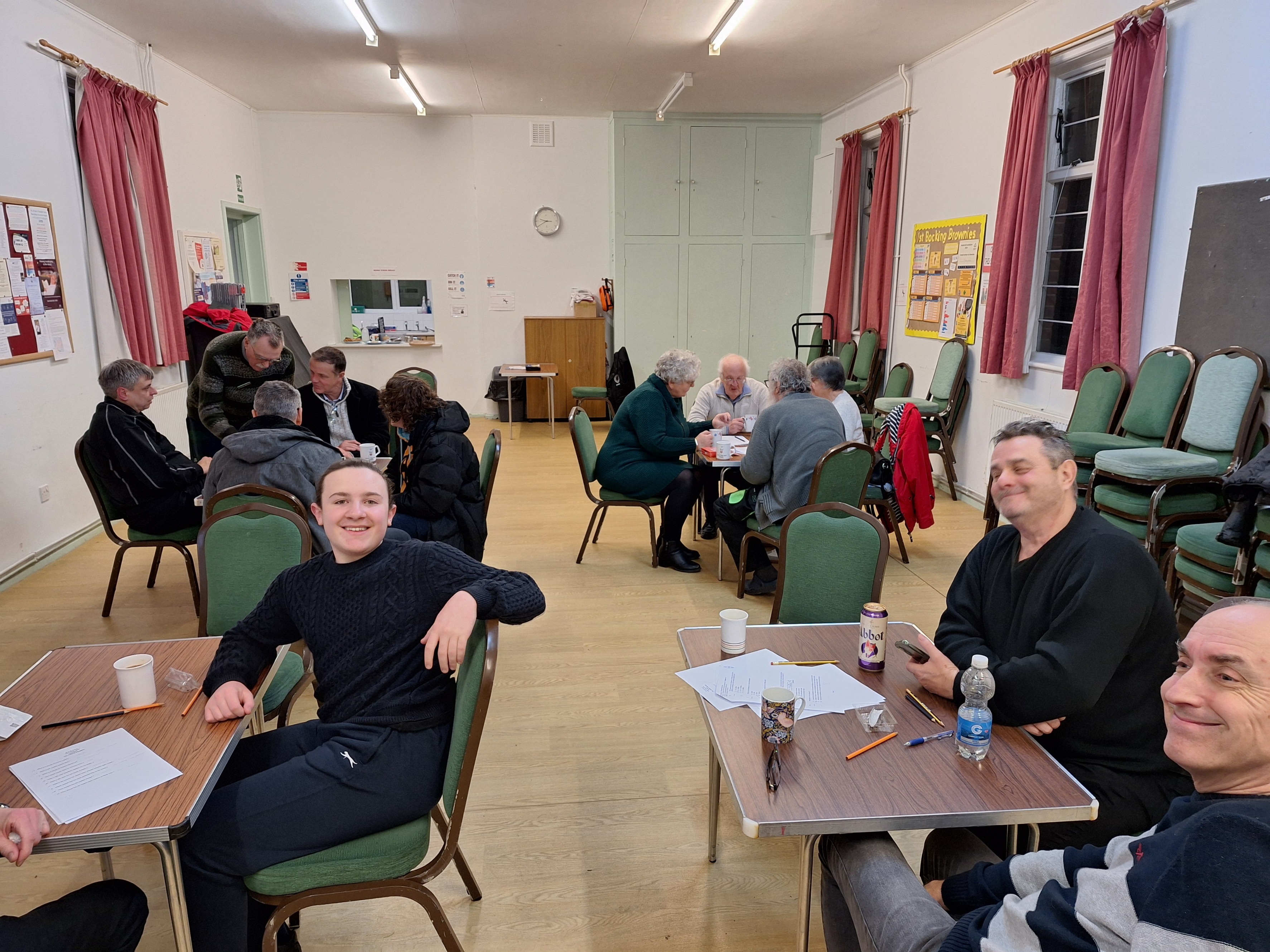
We started our 50th Anniversary year the same way in which we ended 2024 - with fiendish quizzes to challenge our little grey cells! This time we decided to have teams, including ‘Team Zoom’ who were taking part remotely. We had the usual general knowledge, sport etc rounds, but Geoff, G1GNQ our club secretary added a mystery round that was all Foundation Licence questions. Several tables had recently licensed M7 members and they had noticeably higher scores than some of the more seasoned members! The meeting coincided with the birthday of Dave, G0DEC and we had plenty of cakes and other treats to celebrate. The club also set up a new WhatsApp group for club members to complement its existing communication channels and it was an immediate success. In just a few weeks it was being used by the majority of our members to keep in touch with what other people in the club are up to, including: DX alerts and contest reminders; technical questions about radios, antennas and PC programmes; ideas for club meeting topics; and general chit chat.
January 2025
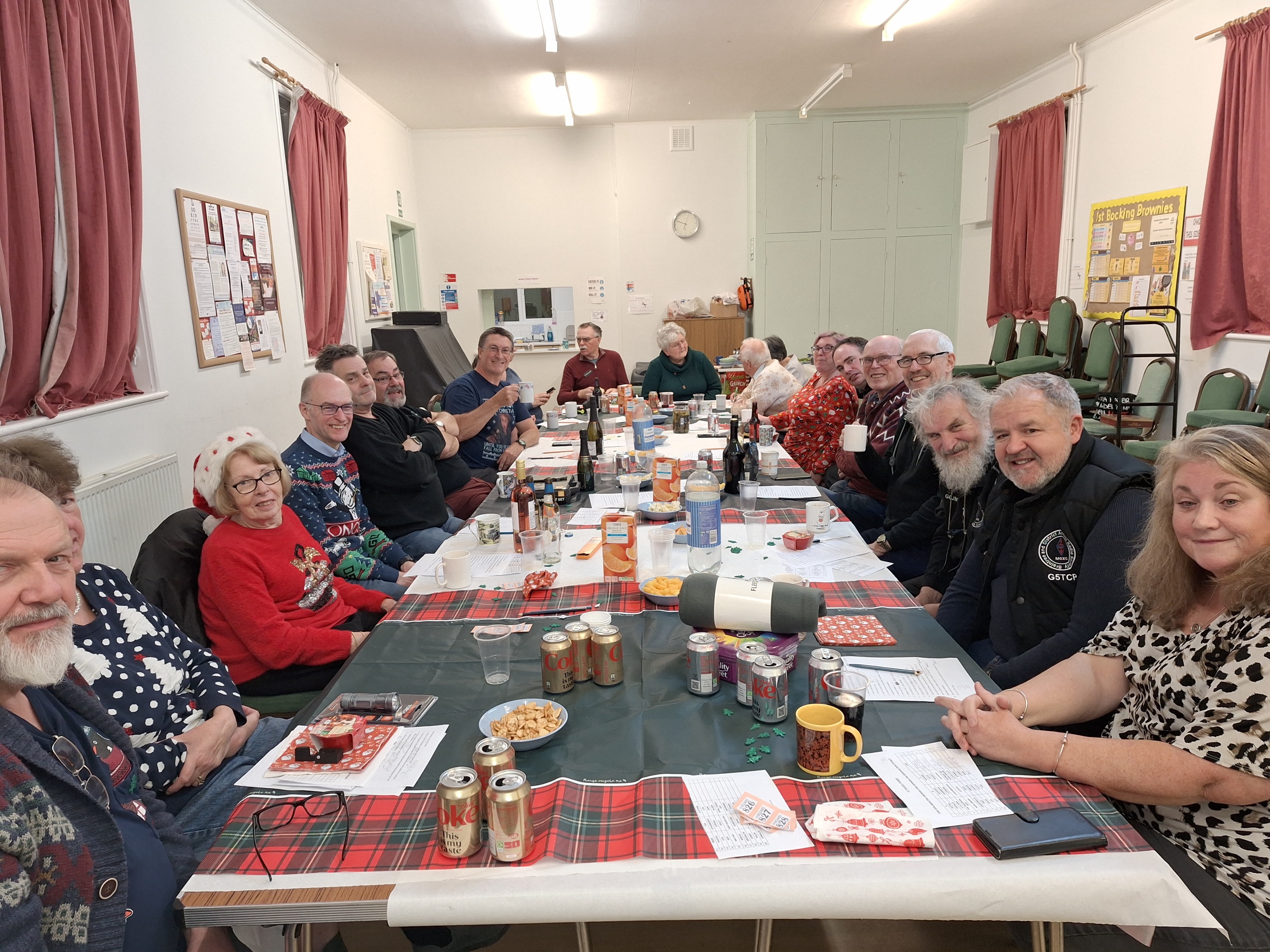
The highlight of December was our annual Christmas social gathering at our regular church hall meeting place. A lot of preparation by Geoff, G1GNQ, his wife Helen, G1NPX and other club members was rewarded by a good number of members and their guests coming along to join in the fun. This was good news, as we had a heavily laden table of food to tuck into, including lovely shortcake biscuits baked by Logan, M7SVL. The traditional quiz rounds followed and as usual these challenged our brain cells and as a result, quite a few people felt it necessary to team up with a partner to tackle the quiz! Winners were rewarded for their efforts with Christmas pudding prizes and we also had a bumper Christmas raffle with many more prizes on offer. With the usual tea and coffee available there was also plenty of time for a natter as well. Thanks to Richard, G4FJC, the event was also available via Zoom and a few members unable to attend in person were able to be included. Another successful event and a perfect way to see the old year out and look forward to our 50th anniversary year.
December 2024
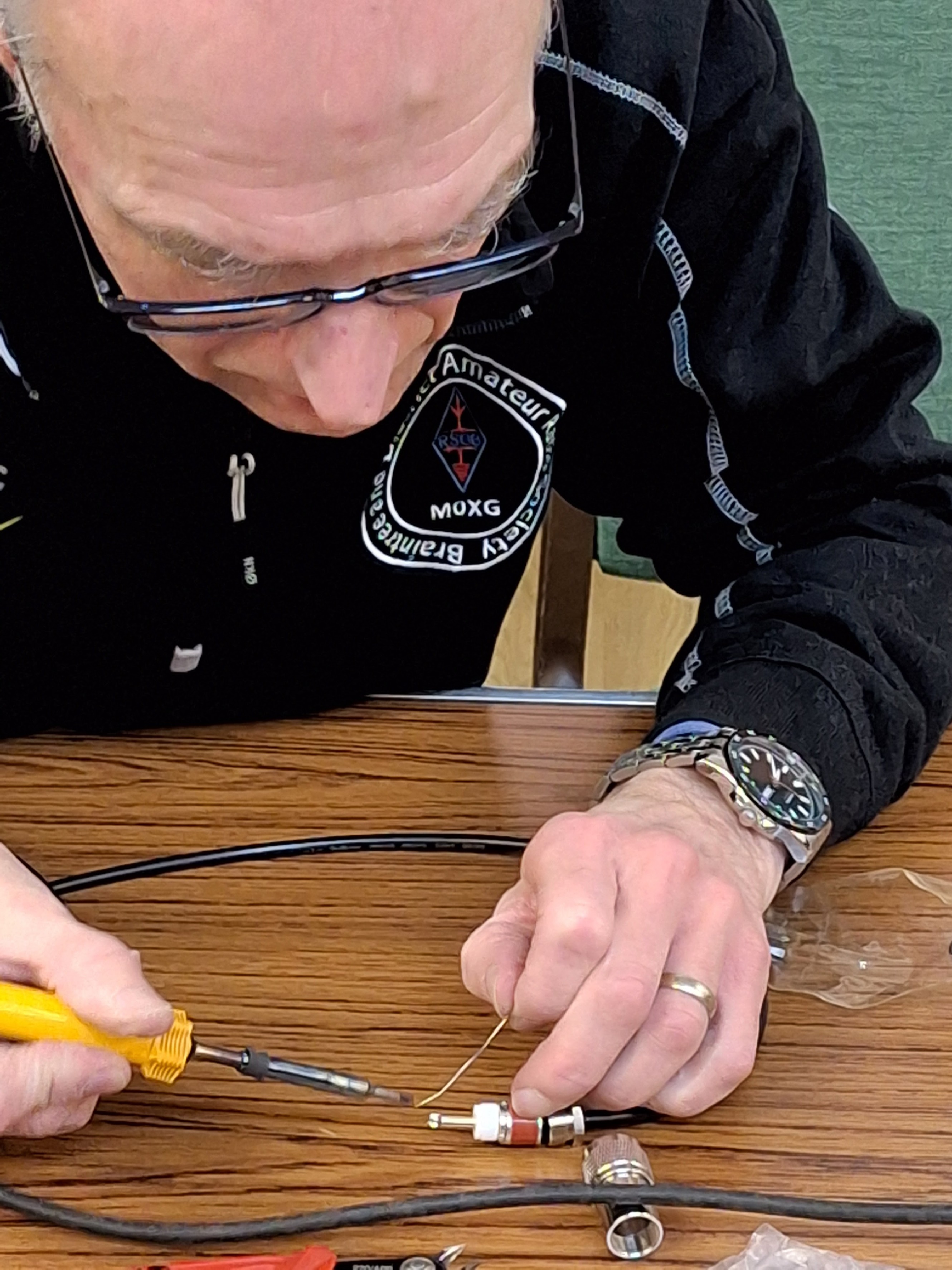
Following on from our successful Slim Jim aerial building construction evening earlier in the year, we held a follow up construction evening devoted to patch lead construction and subsequent testing. Just like the aerial, participants had very different requirements and the ‘patch’ leads varied in length from 30 centimetres to 10 meters. The fact that our Geoff, G1GNQ had a large reel of coax that he was giving out free to members might have had something to do with that! There was much discussion about how best to fit the plugs on the cables and more experienced soldering iron wielders were able to offer useful advice to those less experienced. Several of our new members had not used a soldering iron before but were thrilled when the VNA test rig showed a good match and no discontinuities. Once again, the evening was a great success and we will be looking at other projects that can be completed and tested in a single evening meeting. The photo shows Richard, G4FJC intensely focussed on preventing any solder finding its way to the outside of the PL259 plug centre pin!
November 2024
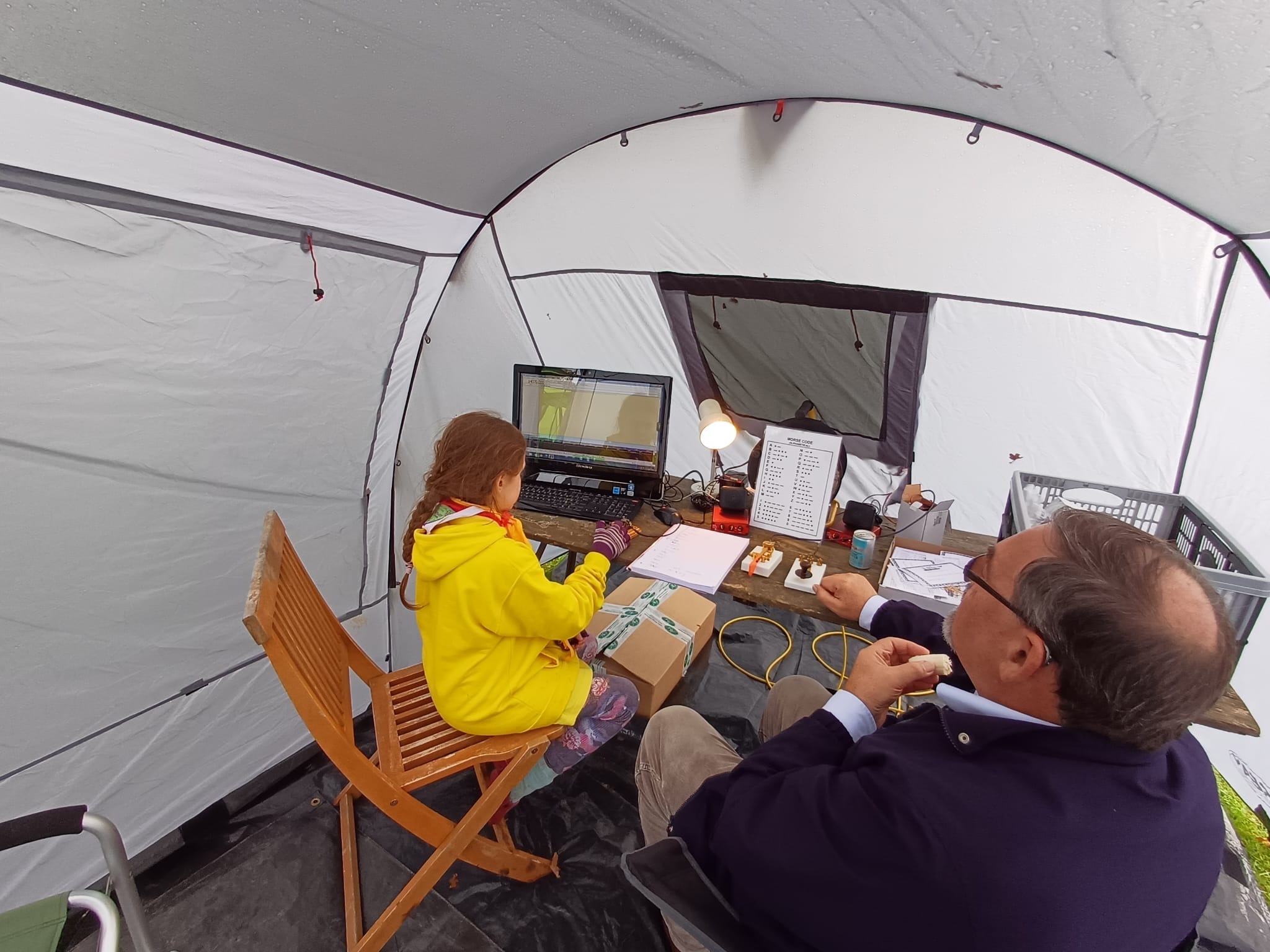
This year we supported JOTA from a new location: Gosfield School near Halstead. We were fortunate to have plenty of space in the school grounds to put up operating tents and aerials during a dry and sunny Friday morning, including an impressive end fed for the low bands. This was a good move as when the scouts arrived in the evening, they started putting up their tents right underneath it and the ‘we were here first’ principle applied and they duly moved them to an appropriate EMF distance away! Saturday morning it poured with rain, but that didn’t dampen the Scouts spirits and it was great to see them enjoying and taking part in the activities in our three tents: HF; VHF/DMR; and CW challenge. All were popular but no-one wanted to miss out on getting a certificate after sending their name in morse, sufficiently well for fldigi to decode it! Operation on Sunday morning was from the school’s cricket pavilion with whip aerials in view of the weather. Groups of scouts continued to enjoy contacts with other JOTA stations on HF, DMR and D-Star, plus of course the CW challenge. It was also safer as other nearby scout activities included air rifle shooting and axe throwing!
October 2024
We were delighted to welcome RSGB District 124 Representative Dave, M0TAZ, to our face to face and Zoom meeting. Dave gave a talk and demonstration about data modes, including a short history which started with CW but also included Hellschreiber, which we were amazed to find dates back to the late 1920’s! He covered the basics of setting up a data receive and transmit station and went through the pros and cons of a number of different modes, followed by demonstrating how to decode a number of different data signals by using his remote controlled, web based KiwiSDR receiver. Dave answered many questions and everyone thoroughly enjoyed the evening.
September 2024
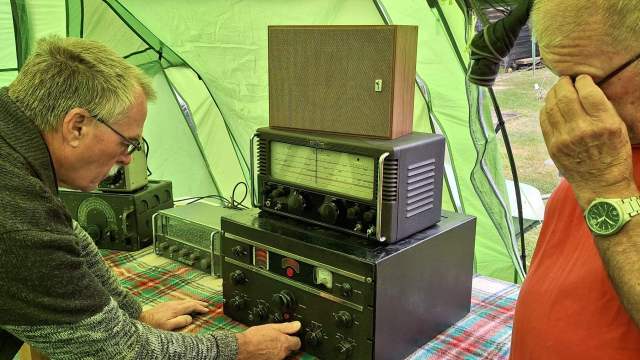
Our first club Vintage Radio Weekend was held at the end of August, with members invited to bring their pre-1990 radios along to the QTH of Geoff, G1GNQ. Aerials and tents were set up in Geoff’s large garden and on Saturday morning members arrived with many HF and VHF/UHF classic radios from across the years, in most cases fully working. This included a wartime WS19 from Mike, G8DJO who made and supervised contacts on CW and AM. A separate tent had shortwave communication receivers from RCA, Racal, Eddystone and Hallicrafters, displayed on a VERY substantial Table. Visitors were amazed that these wonderful radios, often older than the members themselves, were receiving broadcast stations with amazing sound quality. Vintage radios needing diagnosing and repairing went to the hospital tent where Dave, G0DEC had his professional test equipment at hand and restored them to health! A well attended barbecue rounded off Saturday evening and Sunday saw more club members coming along. Over the weekend a great deal of time was spent discussing and reminiscing over the radios present, with a certain amount of regret from some on having disposed of radios that they now wish they still had. Everyone agreed that it was a great success and that this event should be a regular part of the club calendar.